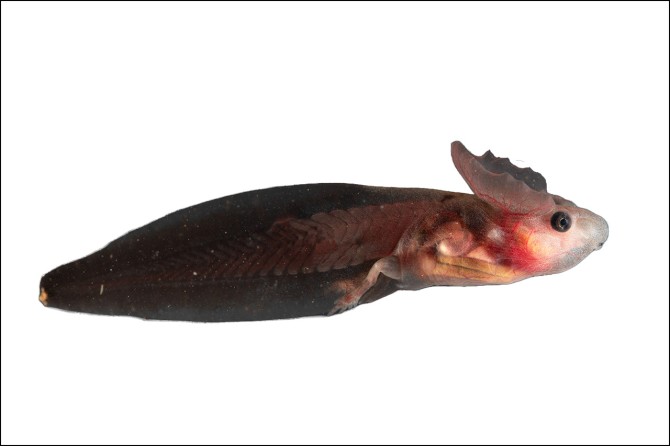Tadpole species that lost their lungs through evolution never re-evolve them, even when environmental change would make it advantageous - bucking long-standing assumptions about how lost traits can reemerge, according to a new study.
Typical tadpoles have three main ways to get oxygen: from the air, with lungs; from the water, through gills; and from the air through their skin.
The African red toad tadpole has a large frill, or crest, of vascularized skin on top of its head. In low oxygen conditions these lungless tadpoles press their crests against the surface to get oxygen from the air.
Curiously, all frogs have lungs, so tadpoles retain the developmental genetics to regain lungs when environmental pressures might favor having them but instead evolve alternate solutions for acquiring oxygen from the air.
The study, published Oct. 27 in the journal Evolution, challenges long-standing assumptions that traits re-evolve more easily when the underlying developmental machinery of a lost trait remains intact.
"The study highlights both the predictability of evolution on the loss side and the utter unpredictability of the solutions that evolution finds for problems," said Jackson Phillips, the study's first author and a doctoral student in the lab of senior author, Molly Womack, assistant professor in the Department of Ecology and Evolutionary Biology (College of Arts and Sciences).







